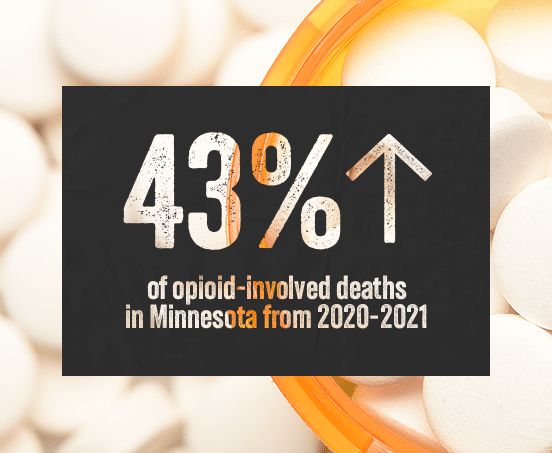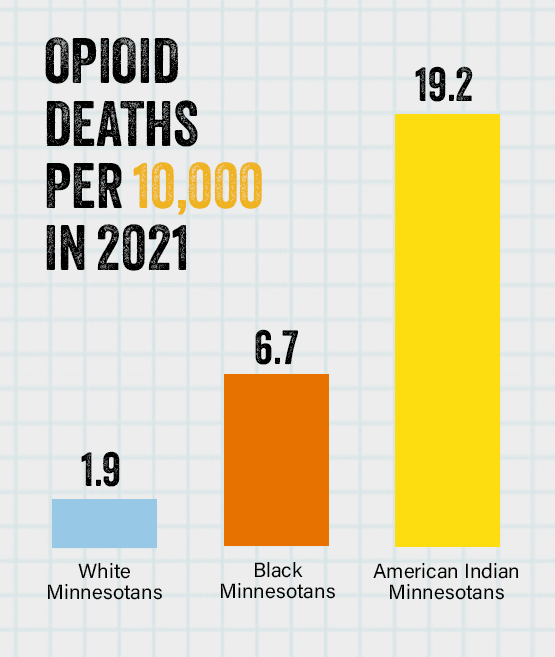An opioid overdose requires immediate medical attention. Call 911 immediately if you or someone you know exhibits any of the symptoms.

Source: MDH
According to preliminary data from the Minnesota Department of Health, there were an estimated 977 opioid-involved overdose deaths in 2021. In contrast, that’s 489 more lives than were lost to car crashes that year.
It is an urgent public health crisis that demands action.
Data shows that opioid-involved deaths in Minnesota have increased by 43% from 2020 to 2021 – with synthetic opioids being involved in 90% of all opioid-involved deaths during that time.
Access to medication-assisted treatment and harm reduction services is an essential dimension of truly equitable public health. As communities big and small work to address their prevention, treatment, and recovery needs, it’s possible to lower opioid overdose-related deaths.
This is why State Opioid Response-funded (SOR) initiatives have been awarded to Minnesota counties, tribes, healthcare providers, and community agencies. Together, we can expand services, address disparities and increase the availability of life-saving medications.

The impact of the opioid crisis has hit some Minnesotans harder than others.
There are significant differences in drug overdose rates among racially and ethnically diverse populations in Minnesota and among the LGBTQ+ community.
In Minnesota, factors like systemic racism have prevented communities of color (particularly African American and American Indian Minnesotans) from having equal access to the resources needed to be healthy. Poverty, adverse childhood experiences, trauma, and intergenerational substance use influence health and can ultimately result in higher overdose death rates throughout communities of color than whites.

Source: MDH
The Minnesota Department of Health developed a Race Rate Disparity in Drug Overdose Death report that outlines the realities of poverty, racism, classism, social isolation, sexual exploitation, and other social inequities that affect people’s vulnerability to and capacity for effectively dealing with drug-related harms.

According to the Minnesota Department of Health’s Federal Opioid Briefing, there are many reasons why various cultural community members are using prescription and illicit opioids to self-medicate and dying from an overdose at such high numbers. Some of the reasons are:
Community leaders share their thoughts and experiences regarding the opioid crisis.